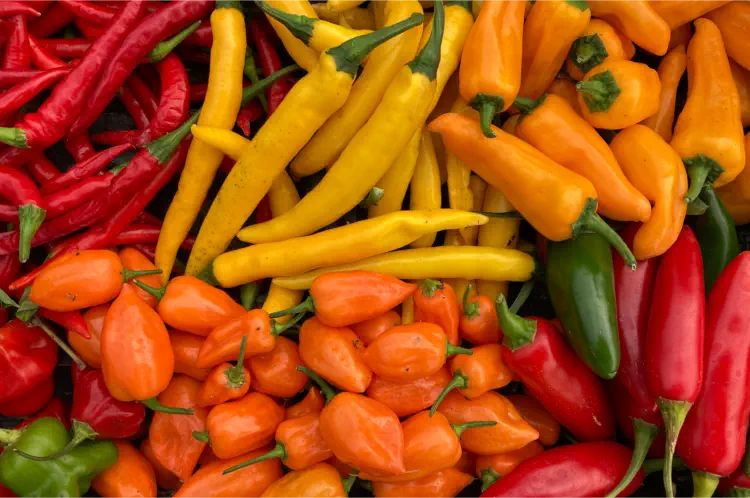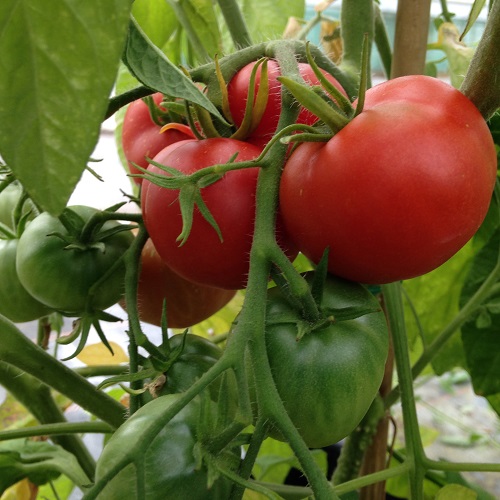Growing strawberry plants in the UK can be a rewarding experience, as our climate is generally suitable for this fruit.
If you're not getting the desired yield from your strawberry plants, there could be several factors at play. Here are some common reasons why strawberry plants might not produce as much fruit as expected:
Poor Pollination: Insufficient pollination can lead to reduced fruit set. Bees are the primary pollinators of strawberries, so ensure that your garden attracts pollinators by planting bee-friendly flowers nearby. You can also gently shake the flowers to help distribute pollen.
Overcrowding: If your strawberry plants are too close together, they may compete for nutrients and sunlight, resulting in smaller yields. Make sure to space the plants adequately when planting and thin out any overcrowded areas as needed.
Nutrient Deficiency: Inadequate levels of essential nutrients, particularly potassium, can negatively impact fruit production. Conduct a soil test to determine if your soil is lacking in any nutrients and amend it accordingly with appropriate fertilizers.
Improper Watering: Inconsistent or inadequate watering can stress the plants and affect fruit development. Ensure that the soil remains consistently moist, especially during flowering and fruiting stages. Mulching can help retain soil moisture and regulate temperature.
Disease and Pest Damage: Diseases such as powdery mildew or pests like aphids can weaken the plants and reduce fruit production. Monitor your plants regularly for signs of disease or pest infestation and take appropriate measures to control them.
Lack of Sunlight: Insufficient sunlight can result in poor fruit development. Make sure your strawberry plants are receiving at least 6-8 hours of direct sunlight per day. If your garden is shaded, consider relocating the plants to a sunnier spot.
Improper Pruning: Overgrown or unpruned strawberry plants may produce fewer fruits. Remove old or diseased foliage, as well as excessive runners, to promote airflow and encourage new growth.
Variety Selection: Some strawberry varieties are more productive than others. Ensure you're growing varieties that are well-suited to your climate and growing conditions.
By addressing these potential issues and providing optimal growing conditions for your strawberry plants, you should see an improvement in fruit production over time.

Feeding Your Strawberry Plants to Increase Your Yield.
Feeding your plants regularly can help promote vigorous growth and increase flower production in your strawberry plants. Here's a recommended fertilisation plan:
Pre-Planting Preparation
Before planting strawberries, amend the soil with organic matter such as compost or well-rotted manure. This will provide a nutrient-rich environment for the plants to establish themselves.
Initial Fertilisation
Apply a balanced fertiliser with a higher ratio of phosphorus (the middle number in the N-P-K ratio) before planting. Phosphorus promotes root development and flower formation. Follow the manufacturer's instructions for application rates.
Early Spring Fertilisation
Once the plants start to actively grow in early spring, apply a balanced fertiliser again. Look for a fertilizer with an N-P-K ratio of around 10-10-10 or similar. Apply according to package instructions, typically watering the evenly around the base of the plants.
Mid-Spring Feeding
About 4-6 weeks after the initial spring feed, provide another round of fertiliser to support the plants as they enter the flowering stage. You can continue to use a balanced fertiliser or switch to one with a slightly higher potassium content (the last number in the N-P-K ratio). Potassium promotes flowering and fruit development.
Foliar Feeding
In addition to soil-applied fertilisers, you can also supplement with foliar feeding. Dilute a foliar feed according to the manufacturer's instructions and spray it directly onto the foliage of the plants. This can provide a quick nutrient boost and enhance flower production.
Monthly Maintenance
Throughout the growing season, especially during the flowering and fruiting stages, continue to feed your strawberry plants monthly with a balanced or slightly potassium-rich fertiliser. This will help sustain healthy growth and encourage continuous flower production.
Strawberry Feeding Tips
Avoid Excessive Nitrogen: While nitrogen is essential for vegetative growth, too much nitrogen can promote excessive leafy growth at the expense of flowers and fruits. Avoid high-nitrogen fertilisers, especially during the flowering stage, to prevent this imbalance.
Watering After Fertilization: After applying your feed, make sure to water the plants thoroughly to help dissolve the nutrients and carry them down to the root zone where they are needed.
You can provide your strawberry plants with the essential nutrients they need to thrive, promote healthy growth, and maximize flower production, ultimately leading to a more abundant harvest.

Here are some tips for successfully growing strawberries in the UK:
Choose the Right Variety: There are various types of strawberries suited to different climates and growing conditions. For the UK, look for varieties that are specifically bred for our cooler climate and have a good resistance to common diseases.
Site Selection: Choose a sunny spot in your garden for planting strawberries. They need at least 6-8 hours of sunlight per day to thrive. Ensure the soil is well-draining and rich in organic matter.
Soil Preparation: Before planting, prepare the soil by incorporating plenty of organic matter, such as compost or well-rotted manure. This will help improve soil structure, fertility, and moisture retention.
Planting: Plant strawberry runners or young plants in early spring or late summer. Space the plants about 30-45cm apart in rows, with rows spaced about 60-75cm apart. Make sure to plant them at the same depth they were previously growing.
Watering: Keep the soil consistently moist, especially during dry spells and when the plants are flowering and fruiting. Avoid overwatering, as strawberries are susceptible to rot in waterlogged conditions.
Mulching: Mulch around the plants with straw, shredded leaves, or pine needles to suppress weeds, conserve moisture, and protect the fruit from rotting on the soil.
Pest and Disease Control: Keep an eye out for common pests like slugs, snails, birds, and aphids, as well as diseases such as powdery mildew and botrytis. Remove any affected leaves or fruit promptly, and consider using organic pest control methods if necessary. If growing in pots keep an eye out for vine weevils in the soil, if you have these consider applying Nemasys Vine Weevil Nematodes during the Spring and Autumn.
Netting: Protect your strawberry plants from birds by covering them with bird netting once the fruit starts to ripen.
Plant Maintenance: After harvesting, remove old leaves and runners to encourage new growth and prevent overcrowding. You can also propagate new plants from healthy runners to replace older ones.
By following these tips, you can enjoy a bountiful harvest of delicious strawberries grown right in your UK garden. Freshly picked gives a taste like no other!
All blog content on this page is copyright of SimplySeed and is not to be reproduced without prior written permission. ©
















Great tips!Thank you.
Very instructive and useful information thankyou !